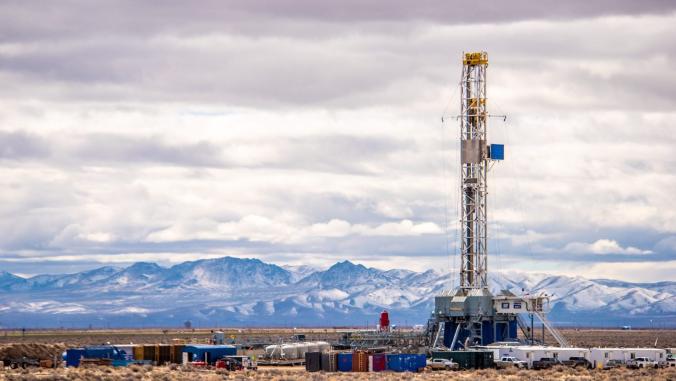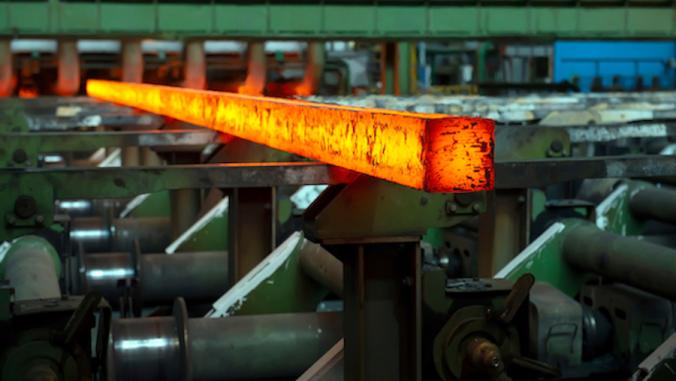Is your factory paying for energy that evaporates into thin air?
Sensors and analytics from startup LightApp are sniffing out deep energy savings in factories and production settings.

Leaks and poor connections in compressed air systems are notorious energy wasters.
From bottling beverages to spray painting cars and powering air guns, compressed air is ubiquitous across most manufacturing plants. It also may be the most wasteful utility on the shop floor. Leaks and poor connections mean companies may be paying for energy that literally evaporates into thin air. And given it is odorless, invisible and innocuous, it’s really difficult to pinpoint.
That’s why LightApp, an Israeli-Silicon Valley startup, chose compressed air systems as a focus of its industrial-internet-of-things (IIoT) technology.
This month marked the conclusion of Project Engage, a multi-year, multi-million-dollar pilot project funded by the California Energy Commission (CEC) that deployed LightApp’s technology in more than 100 facilities in California. The ambitious deployment was designed in partnership with the University of California, Berkeley, the Massachusetts Institute of Technology and the University of Chicago to see if a single technology could scale to reduce electricity use across the industrial sector.
The final outcome from the pilot project has not been released as researchers are still analyzing the finding. However, according to Elhay Farkash, CEO and founder of LightApp, fully deployed customers outside of Project Engage are, on average, seeing a 23 percent reduction in total energy consumption.
Two participating companies have released data from the 12 months they used LightApp. Pepsi Fresno saw a 32 percent efficiency improvement on compressed air generation, equal to $45,000 of annual savings.
"This helped us come a long way to meet our overall efficiency improvement goals for the facility," said Ben Duncan, process improvement engineer at Pepsi, in an email. "We are currently expanding to other areas in the plant beyond compressed air and setting more aggressive goals for the coming year."This helped us come a long way to meet our overall efficiency improvement goals for the facility.
Bimbo Bakeries saw a 47 percent efficiency improvement, saving over $160,000 annually, according to data from the CEC. The CEC estimates that the technology could save $16.5 million (PDF) at manufacturing facilities that use sizable compressed air systems in California’s investor-owned utility territories, which would be in the neighborhood of 70,000 facilities.
About Project Engage
Project Engage deployed the LightApp technology in 102 industrial facilities, which were invited to join from a list of 1,000 facilities randomly selected in Southern California Edison’s and Pacific Gas & Electric’s service territories. In other words, the project was designed to ensure a sampling of industries, conditions and locations.
The potential for one technology to work across multiple industrial sectors was an attractive prospect for the CEC, as industry is responsible for 23 percent of greenhouse gas emissions in California.
"It wasn’t a one-off project, and that was one of the things that appealed to us," said Virginia Lew, manager of the CEC’s Energy Efficiency Research Office. "Most of our research projects typically only focus on doing demonstrations in a few buildings and facilities, not 100 facilities, and that’s what made this project so unique."
How does LightApp work?
LightApp works like this: Sensors on air compressors collect input data — electricity — and output data — pressure and air flow. Then, it automatically models that data into an online dashboard. The dashboard then pushes out real-time performance data and action items to improve efficiencies.
The result is specific information about how much waste and leakage is costing operations and what a plant could do to make processes more efficient. By understanding the issue in monetary terms, managers can know the payback on equipment repairs or replacements.
According to LightApp, many participants in Project Engage identified significant inefficiencies, many of which could be corrected with low-cost fixes or upgrades. Others identified they were able to defer the purchase of new compressed air equipment.
"This is probably one of the most successful projects that we’ve had in terms of the number of deployments and also the number of people that are interested in continuing on," Lew said. "That’s all pluses for us, because we’re looking at not just doing the demonstration, we want to see more of it being deployed and used out there."
The social component of energy efficiency
LightApp aims to engage users by comparing a plant’s performance to others in California on an anonymous basis. This function helps customers understand how they’re performing against others using the same system.
"There is an effect of exposing the processes and the information, and socializing it between facilities that is a big driver of change and willingness to invest to reduce GHG [emissions]," said Elhay Farkash, CEO and founder of LightApp. "Collecting data and analyzing it on the shop floor is something that has happened for a long time even without the IoT, but making sense of it and comparing yourself to everyone else is what will drive change."Collecting data and analyzing it on the shop floor is something that has happened for a long time, but making sense of it and comparing yourself to everyone else is what will drive change.
A McKinsey study indicates that in the residential sector, advising energy consumers that their neighbors are saving money through efficiency often spurs upgrades to keep up with the Joneses. The jury is out as to whether any of the same behavioral economic rules apply to industrial users.
The potential of the industrial internet of things
While energy is among the largest line-items in a manufacturing company’s budget, most plants pay a single utility bill, making it hard to determine which processes or machines are running inefficiently. Enter the industrial internet of things.
As illustrated in the LightApp example, IIoT can be deployed to look at the efficiency of individual machines and processes. With this information, manufacturing plants can hone in on inefficiency and precisely slash waste.
LightApp or similar technologies could be used to measure other energy-intensive systems, such as chillers, boilers and furnaces. There seems to be a demand for it — 45 percent of participants in Project Engage requested expansion beyond compressed air systems.
"[The] industrial sector is a very important sector in terms of reducing GHG emissions," Lew said. "Most of them are high users of natural gas and fossil fuel. This tool, even though it started with compressed air, it holds the potential to do something similar with these other large energy-using systems."
Editor's note: This story was updated April 30 to clarify information provided by LightApp about the results of Project Engage.





